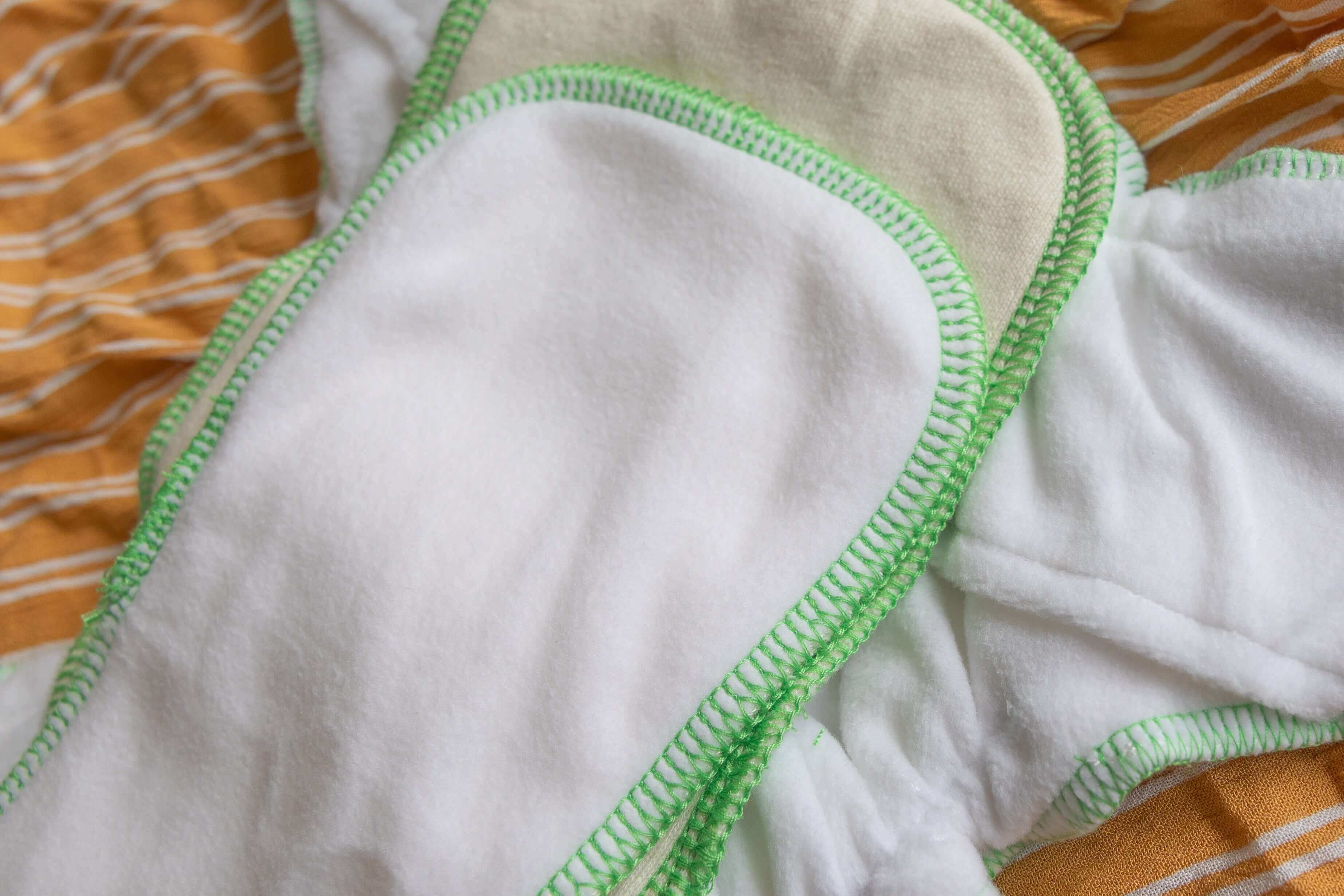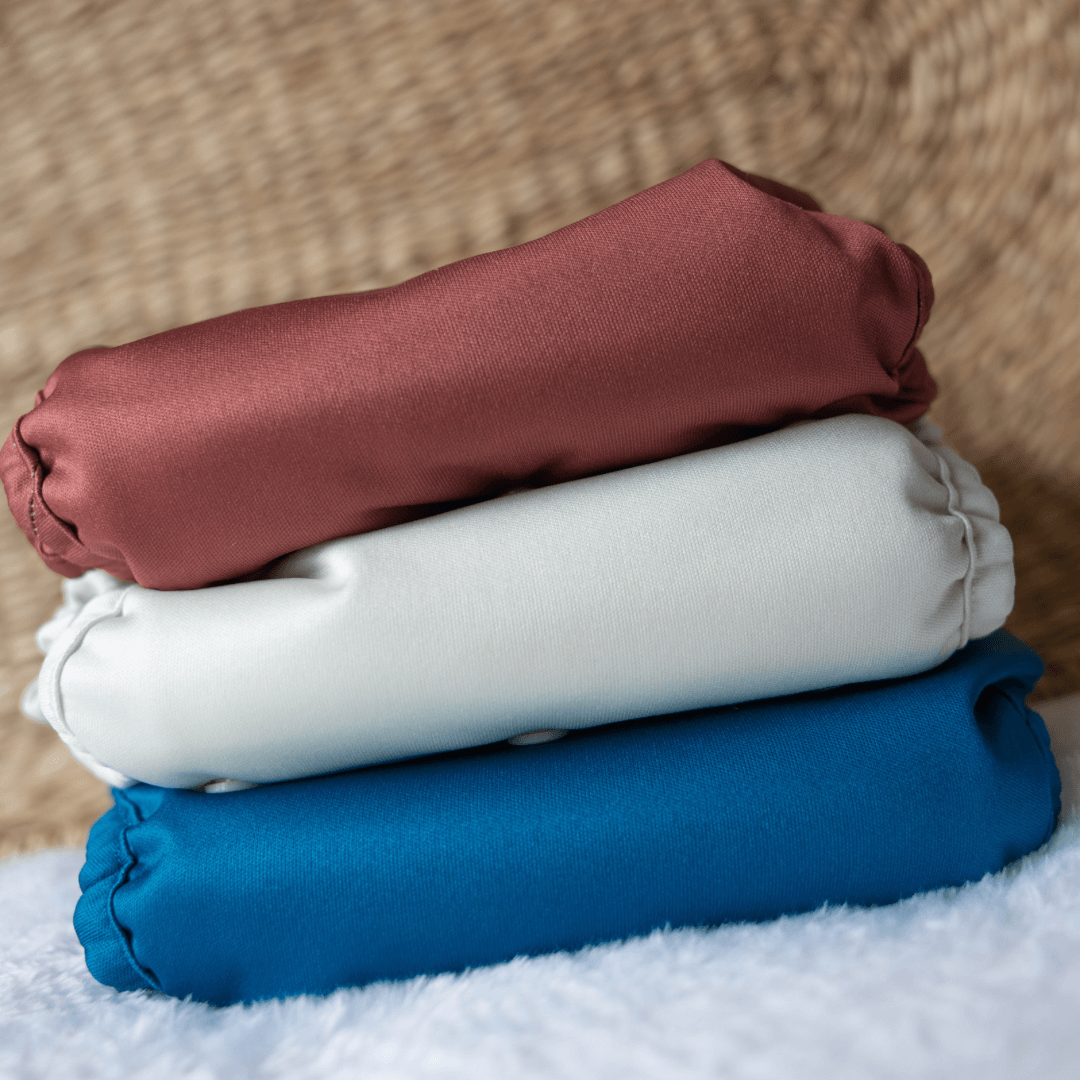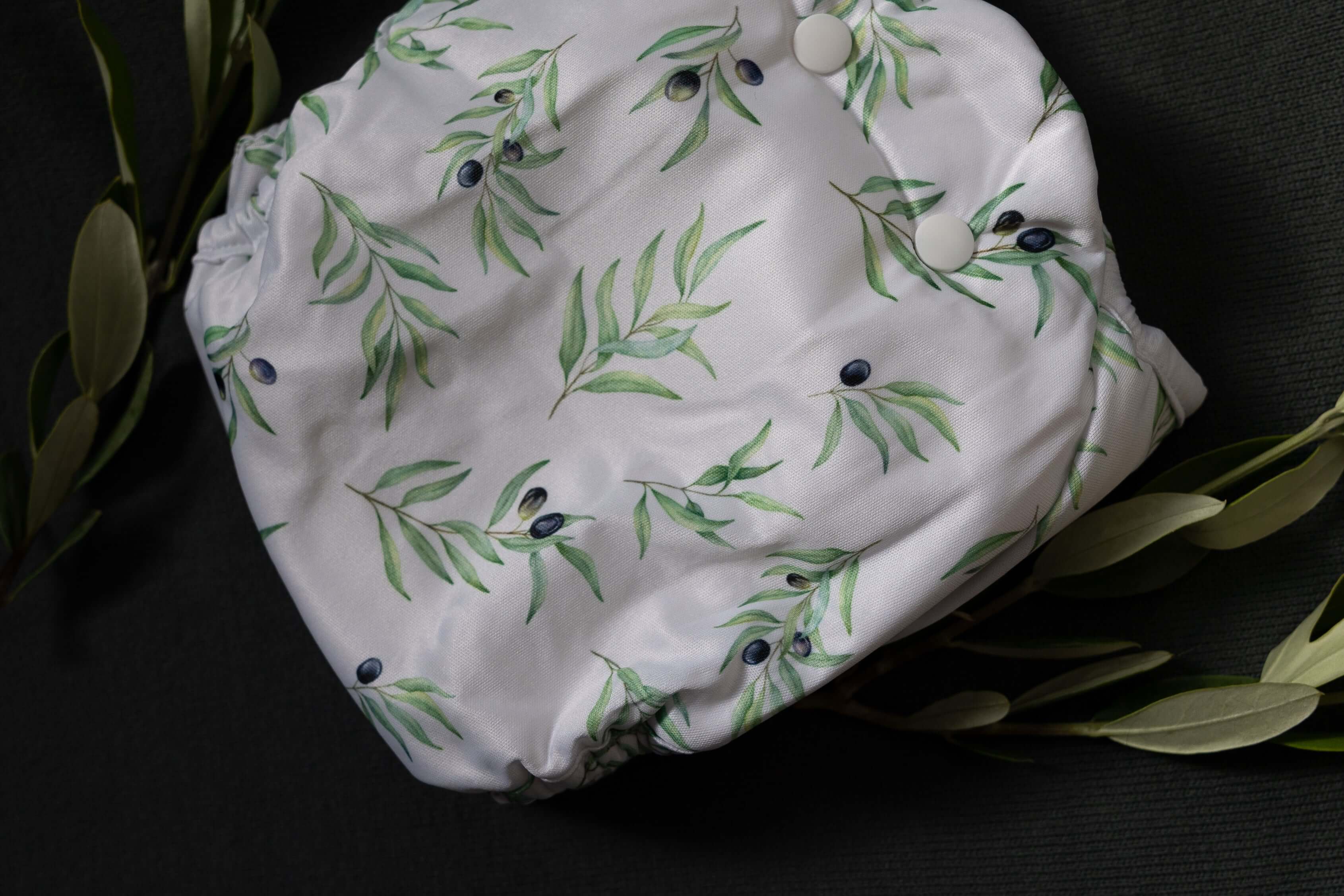
The Science of Absorbency in Reusable Diapers: A Deep Dive into Materials and Techniques
Welcome to our comprehensive guide on the fascinating world of cloth diaper absorbency. Whether you're a seasoned cloth diapering pro or just starting out, understanding the science behind these eco-friendly options is key to a successful and stress-free experience.
Understanding Cloth Diaper Materials
The most common materials used for absorbency here at Bayrli are: Microfiber, Bamboo, and Hemp;
Microfiber
A synthetic material known for its quick absorbency, microfiber inserts are a popular choice. However, they're like sponges – great at soaking up liquid quickly but prone to squeezing it out under pressure (think: compression leaks). Great for the newborn stage when your little one is changed often and the toddler phase when they tend to flood their diapers a bit quickly.
Bamboo
A step up, bamboo blends natural absorbency with softness. It absorbs more slowly than microfiber but holds more liquid. Plus, it's a sustainable choice, ticking the eco-friendly box! Bamboo is the true all-rounder due to its ability to be used alone or paired with other materials.
Hemp
The heavyweight champion in absorbency, hemp inserts may be slower to absorb but they pack a punch in holding capacity. Ideal for heavy wetters and overnight use, hemp's durability is another feather in its cap.
TPU and PUL Waterproof Covers
TPU (Thermoplastic Polyurethane) and PUL (Polyurethane Laminate) are the unsung heroes in cloth diapers. Acting as a waterproof barrier, they keep wetness contained without compromising breathability. TPU, heat-bonded, is slightly more flexible than PUL, which is chemically bonded. Both are effective at preventing leaks, but the choice often boils down to personal preference and environmental considerations.
The significant difference between TPU and PUL is ultimately the production process. PUL is a type of plastic that uses chemicals in production, whereas TPU is bonded using heat rather than chemicals. That’s it. It’s a simpler, cleaner, and more efficient process, and that is why we use TPU at Bayrli.
Comparison with Disposables
Unlike disposables, which rely on chemicals like SAP (Super Absorbent Polymer) to soak up vast amounts of liquid, cloth diapers depend on layers of absorbent fabric. This difference not only makes cloth diapers more eco-friendly but also reduces the risk of irritation for sensitive baby skin.
How Absorbency Works
Absorbency in cloth diapers is all about capillary action – the ability of liquid to flow in narrow spaces without the assistance of external forces. The type of fabric (microfiber, bamboo cotton, bamboo, or hemp) influences how quickly and efficiently this action occurs. Long term care and how you treat your diapers also has a part to play here as well.
Layering Cloth Diaper Inserts for Nighttime and TravelWhen you're planning for longer periods, such as nighttime or travel, layering different types of inserts can be a game-changer. Combining a quick-absorbing microfiber insert on top with a hemp insert at the bottom provides both immediate and long-lasting absorbency.
Tips for Maximizing Cloth Diaper Absorbency:
- Proper Fitting Techniques: A snug fit is crucial. Ensure the diaper is tight enough to prevent leaks but comfortable enough for your baby's movements.
- Prepping Your Diapers: New inserts, especially natural fibers like hemp and bamboo, need to be washed several times before use to reach their full absorbency potential.
- Regular Maintenance: Regular washing with a cloth diaper-safe detergent keeps the fabrics at their best absorbency. Avoid fabric softeners and bleach, which can hinder absorbency.
FAQs
How often should I change a cloth diaper?
Generally, every 2-3 hours, but this can vary based on the baby’s age, the diaper’s material, and the baby's output.
Can I mix different types of inserts?
Absolutely! Mixing inserts like microfiber and hemp can offer the benefits of both quick absorbency and high capacity.
How do I prevent nighttime leaks?
Opt for high-absorbency materials like hemp and ensure the diaper fits snugly around the waist and legs.
Understanding the science behind cloth diaper absorbency is crucial for a successful cloth diapering experience. By choosing the right materials and mastering fitting and layering techniques, you can ensure comfort for your baby and peace of mind for yourself. Remember, every baby is unique, so don't hesitate to experiment with different combinations to find what works best for your little one.
Cloth diapering is not only a practical choice but an environmentally conscious one. By embracing this sustainable practice, you're contributing to a greener planet for your child's future. So, keep exploring, keep learning, and enjoy the rewarding journey of cloth diapering!


